The following details relating to the ancient glass at Fledborough have been kindly sent by the Rev. C. B. Collinson, vicar of Laxton, a few additional notes being supplied by the Editor:—
The windows in the aisles of the church contain some heraldic glass of interest, probably showing the alliances of the de Lisieux family ; their pedigree, however, does not appear to be on record in the College of Arms. The shields occupy the quatrefoils at the heads of the windows, and are, or have been, in pairs in the windows of the north aisle.
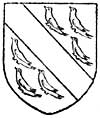 |
Argent, a bend between six martlets gules. Furnival (H. 3). The other quatrefoil in this window is blank. |
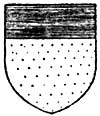 |
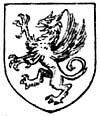 |
Or, a chief azure. Lisieux. |
Azure, a griffin segreant argent. Perhaps Culcheth, of Lancashire and Cheshire. |
Argent, semee of crosses crosslet botonee fitchee, three roses (or cinquefoils) gules. Saltemarshe, of Yorkshire, Lincolnshire, and Warwickshire. |
 |
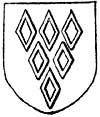 |
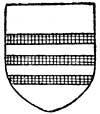 |
Gules, six muscles or. Rivers or Andrew. |
Argent, three bars or barrulets sable. Bussey. |
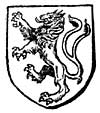 |
Gules, a lion rampant double queued or. Burghersh. (Papworth, p. 79.) Also Argent, a saltire frettv in chief a martlet sable. (The tinctures are much faded and uncertain.) |
In the south aisle : — |
|
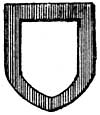 |
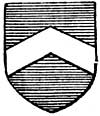 |
Argent, a bordure gules. The authorities do not give this shield, but Argent, a border gules bezantee is given as Hunt. |
Azure, a chevron argent. Lodbroke, of Warwickshire. Also Allenson, Eyvell or Eynell, Gorwood or Gurwood, Prow, Stangate |
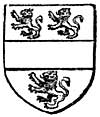 |
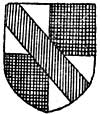 |
Azure, a fesse argent between three lions rampant or. Bolingbroke. |
Quarterly, argent and sable, a bend gules. Everingham of Lincolnshire |
The above two shields have apparently been reversed in fixing. |
|
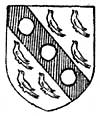 |
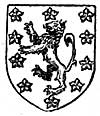 |
Argent, on a bend between six martlets gules, three bezants. Arms of Wortley (Papworth, p. 271). |
Argent, an orle of loses (or cinquefoils), a lion rampant sable. Pierrepont. |
There is a piece of loose glass in the vicar's possession corresponding in size and shape with the quatrefoils of the windows, which shows :— |
|
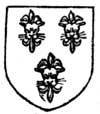 |
Azure, three leopard's heads jessant de lys or. The arms of Cantelupe, which family had a chantry at Lincoln. (Papworth, p. 929.) |
In the windows of the north aisle, the shield of de Lisieux is constantly repeated, suggesting that the others shew alliances with that family.
The originals are of great interest, as they were designed when heraldry was still a living art. The spares of the shields are filled with elegant diaper work, and the whole series give a rare and instructive example of mediaeval heraldic glass.
